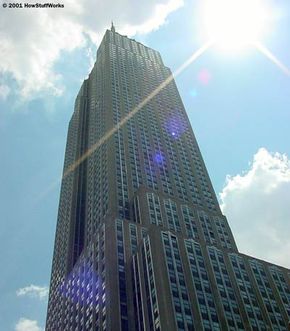Making It Functional
In the last section, we saw that new iron and steel manufacturing processes opened up the possibility of towering buildings. But this is only half the picture. Before high-rise skyscrapers could become a reality, engineers had to make them practical.
Once you get more than five or six floors, stairs become a fairly inconvenient technology. Skyscrapers would never have worked without the coincident emergence of elevator technology. Ever since the first passenger elevator was installed in New York's Haughwout Department Store in 1857, elevator shafts have been a major part of skyscraper design. In most skyscrapers, the elevator shafts make up the building's central core.
Advertisement
Figuring out the elevator structure is a balancing act of sorts. As you add more floors to a building, you increase the building's occupancy. When you have more people, you obviously need more elevators or the lobby will fill up with people waiting in line. But elevator shafts take up a lot of room, so you lose floor space for every elevator you add. To make more room for people, you have to add more floors. Deciding on the right number of floors and elevators is one of the most important parts of designing a building.
Building safety is also a major consideration in design. Skyscrapers wouldn't have worked so well without the advent of new fire-resistant building materials in the 1800s. These days, skyscrapers are also outfitted with sophisticated sprinkler equipment that puts out most fires before they spread very far. This is extremely important when you have hundreds of people living and working thousands of feet above a safe exit.
Architects also pay careful attention to the comfort of the building's occupants. The Empire State Building, for example, was designed so its occupants would always be within 30 feet (ft) of a window. The Commerzbank building in Frankfurt, Germany has tranquil indoor garden areas built opposite the building's office areas, in a climbing spiral structure. A building is only successful when the architects have focused not only on structural stability, but also usability and occupant satisfaction.
